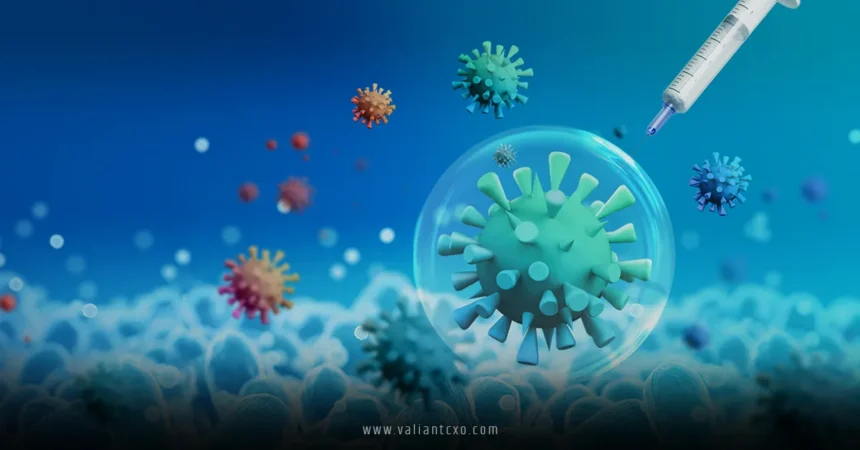Infectious disease has been a part of human history since, well, forever. These microscopic troublemakers—bacteria, viruses, fungi, and parasites—sneak into our lives, sometimes causing mild annoyances and other times sparking global panic. But what exactly is an infectious disease, and why should you care? Picture it like an uninvited guest crashing your body’s party, messing with your systems, and sometimes overstaying their welcome. In this article, we’ll dive deep into the world of infectious diseases, exploring what they are, how they spread, how to prevent them, and why they’re such a big deal. Let’s unpack this invisible threat with a conversational lens, so you can walk away informed and empowered.
What Is an Infectious Disease?
An infectious disease is any illness caused by tiny organisms—think bacteria, viruses, fungi, or parasites—that invade your body and start causing chaos. Unlike chronic conditions like diabetes, which develop over time, an infectious disease often strikes fast, thanks to these living pathogens. From the common cold to more severe cases like tuberculosis or COVID-19, these diseases vary wildly in their impact. Some are as mild as a sniffle, while others can turn your world upside down.
Why do these pathogens matter? Because they’re masters of survival. They can live on surfaces, float through the air, or hitch a ride in contaminated water. And here’s the kicker: they don’t discriminate. Whether you’re a toddler in daycare or a CEO in a corner office, an infectious disease can find you. The good news? Understanding them is the first step to staying one step ahead.
Types of Pathogens Behind Infectious Diseases
Let’s break down the culprits. Each type of pathogen behind an infectious disease has its own playbook:
- Bacteria: These single-celled organisms can cause infections like strep throat or urinary tract infections. Antibiotics are their kryptonite, but overuse has led to resistant strains—more on that later.
- Viruses: Smaller than bacteria, viruses like influenza or HIV invade your cells and use them as factories to replicate. Vaccines are often our best defense here.
- Fungi: Think athlete’s foot or yeast infections. Fungi love warm, moist environments and can be stubborn to treat.
- Parasites: From malaria-carrying mosquitoes to tapeworms, parasites are sneaky freeloaders that thrive at your expense.
Each of these pathogens plays a different game, but they all share one goal: to spread and survive, making infectious diseases a constant challenge.
How Do Infectious Diseases Spread?
Ever wonder how an infectious disease jumps from one person to another? It’s like a bad game of tag, except the stakes are higher. These diseases spread through several routes, and knowing them can help you dodge the “it” tag:
Direct Contact
Touching someone with an infectious disease—like shaking hands with someone who has the flu—can transfer pathogens. Kissing, hugging, or even a high-five can do the trick. It’s why your mom always nagged you to wash your hands.
Airborne Transmission
Coughing, sneezing, or even talking can launch tiny droplets loaded with pathogens into the air. Diseases like measles or COVID-19 love this method. Imagine these droplets as tiny parachutes, drifting until they land on someone new.
Contaminated Surfaces
Ever touched a doorknob and then rubbed your eyes? That’s how an infectious disease can hitch a ride. Pathogens can linger on surfaces for hours or even days, waiting for their next host.
Food and Water
Contaminated food or water is a major culprit, especially in areas with poor sanitation. Think E. coli from undercooked meat or cholera from dirty water. It’s like playing Russian roulette with your lunch.
Vectors
Mosquitoes, ticks, and fleas are nature’s delivery service for infectious diseases like malaria or Lyme disease. These critters bite, infect, and move on, leaving you to deal with the aftermath.
Understanding these pathways is like having a map to avoid the traps. It’s not about living in fear but about making smart choices to reduce your risk.
Why Are Infectious Diseases a Global Concern?
In-fe-ct-io-us di-se-as-es aren’t just a personal problem—they’re a global one. A single sneeze in one country can spark an outbreak across continents, thanks to our interconnected world. Remember the COVID-19 pandemic? It showed us how fast an infectious disease can spread when we’re not prepared.
Beyond speed, there’s the issue of antibiotic resistance. Overusing antibiotics has created superbugs—bacteria that laugh in the face of our best drugs. According to the World Health Organization, antimicrobial resistance could cause 10 million deaths annually by 2050 if we don’t act. That’s a scary number, but it’s not just about statistics. It’s about real people—your family, your friends—facing illnesses we can’t easily treat.
Then there’s the economic toll. Infectious diseases disrupt economies, from healthcare costs to lost productivity. During the 1918 flu pandemic, entire cities shut down. Sound familiar? Modern pandemics can do the same, hitting small businesses and global markets alike.
Preventing Infectious Diseases: Your Toolkit
So, how do you protect yourself from an in-fe-ct-io-us di-se-a-se? It’s not about living in a bubble but about building a defense system. Here’s your toolkit:
Vaccination: Your Body’s Shield
Vaccines are like training your immune system for battle. They expose your body to a harmless version of a pathogen, so it’s ready to fight the real thing. Vaccines have slashed cases of diseases like polio and measles. If you’re skeptical, ask yourself: when was the last time you heard of a smallpox outbreak? Exactly. Check out CDC’s vaccine resources for more info.
Hygiene: The First Line of Defense
Washing your hands is like locking the front door to keep intruders out. Soap and water for 20 seconds can stop an infectious disease in its tracks. Add in habits like covering your mouth when you cough and avoiding touching your face, and you’re already winning.
Safe Food and Water Practices
Cook meat thoroughly, wash veggies, and avoid sketchy water sources. It’s simple but effective. If you’re traveling, stick to bottled water in areas where an infectious disease like cholera is common.
Avoiding Vectors
Use insect repellent, wear long sleeves, and check for ticks after a hike. These small steps can prevent diseases like West Nile virus or Lyme disease.
Stay Informed
Knowledge is power. Stay updated on outbreaks in your area through reliable sources like the National Institutes of Health. Knowing what’s circulating can help you take extra precautions.
The Role of Modern Medicine in Fighting Infectious Diseases
Modern medicine has been a game-changer in tackling infectious diseases. Antibiotics, antivirals, and antifungals are like the superheroes of the medical world, swooping in to save the day. But they’re not perfect. Overprescribing antibiotics has led to resistance, making some infections harder to treat.
Vaccines, as we mentioned, are a cornerstone. They’ve eradicated diseases like smallpox and nearly eliminated polio. But developing vaccines takes time, and new pathogens keep popping up. That’s why research and innovation are critical.
Public health measures—like contact tracing, quarantine, and mask mandates—also play a huge role. During the COVID-19 pandemic, these strategies slowed the spread of an infectious disease when vaccines weren’t yet widely available. It’s a reminder that we’re all in this together.
Challenges in Treatment
Not every infectious disease has a cure. HIV, for example, can be managed with antiretroviral therapy, but there’s no outright cure. And new diseases, like emerging coronaviruses, keep scientists on their toes. Plus, access to treatment isn’t equal—low-income regions often struggle to get vaccines or medications, making global health equity a pressing issue.
The Future of Infectious Diseases: What’s Next?
What does the future hold for infectious diseases? It’s a mixed bag. On one hand, advances in technology—like mRNA vaccines and AI-driven diagnostics—are giving us new tools to fight back. On the other, climate change and globalization are making it easier for infectious diseases to spread. Warmer temperatures mean mosquitoes are popping up in new places, carrying diseases like dengue fever. And with millions of people traveling daily, a single infectious disease can go global in hours.
Antibiotic resistance is another looming threat. Scientists are racing to develop new drugs, but it’s a cat-and-mouse game. The more we use antibiotics, the faster bacteria adapt. It’s like trying to hit a moving target.
But there’s hope. Global collaboration, like the WHO’s efforts to track and respond to outbreaks, is stronger than ever. And individuals—you and me—can make a difference by staying informed, vaccinated, and proactive.
Conclusion: Taking Control of Infectious Diseases
Infectious diseases are a fact of life, but they don’t have to run the show. By understanding how these diseases work, how they spread, and how to prevent them, you’re arming yourself with knowledge that can save lives—yours, your family’s, or even a stranger’s. From washing your hands to getting vaccinated, small actions add up. The fight against infectious diseases is a team effort, blending personal responsibility with global innovation. So, let’s stay vigilant, keep learning, and take charge of our health. Ready to be a part of the solution?
FAQs About Infectious Diseases
1. What is the most common way an infectious disease spreads?
An infectious disease often spreads through direct contact, like touching or shaking hands, or through airborne droplets from coughs and sneezes. Handwashing and masks can significantly reduce the risk.
2. Can all infectious diseases be prevented with vaccines?
Not all infectious diseases have vaccines, but many—like measles, polio, and influenza—do. Vaccines are one of the most effective tools for prevention, but hygiene and other measures are also key.
3. How does antibiotic resistance affect the treatment of an infectious disease?
Antibiotic resistance makes it harder to treat bacterial infections, as some bacteria no longer respond to common drugs. This can lead to longer illnesses and higher risks, emphasizing the need for careful antibiotic use.
4. Are infectious diseases more common in certain parts of the world?
Yes, infectious diseases often thrive in areas with poor sanitation, limited healthcare, or dense populations. However, global travel means no region is completely safe from outbreaks.
5. How can I stay updated on infectious disease outbreaks?
Follow trusted sources like the World Health Organization or the CDC for real-time updates on infectious disease outbreaks. Local health departments also provide region-specific alerts.
Read More :valiantcxo.com


